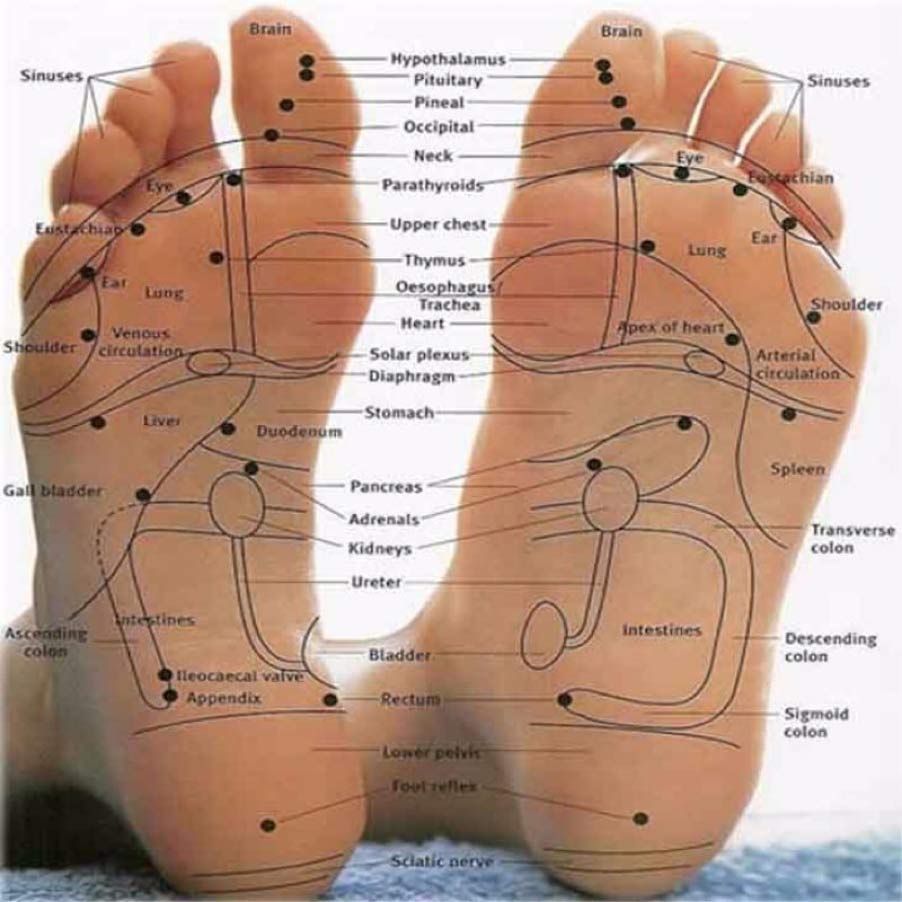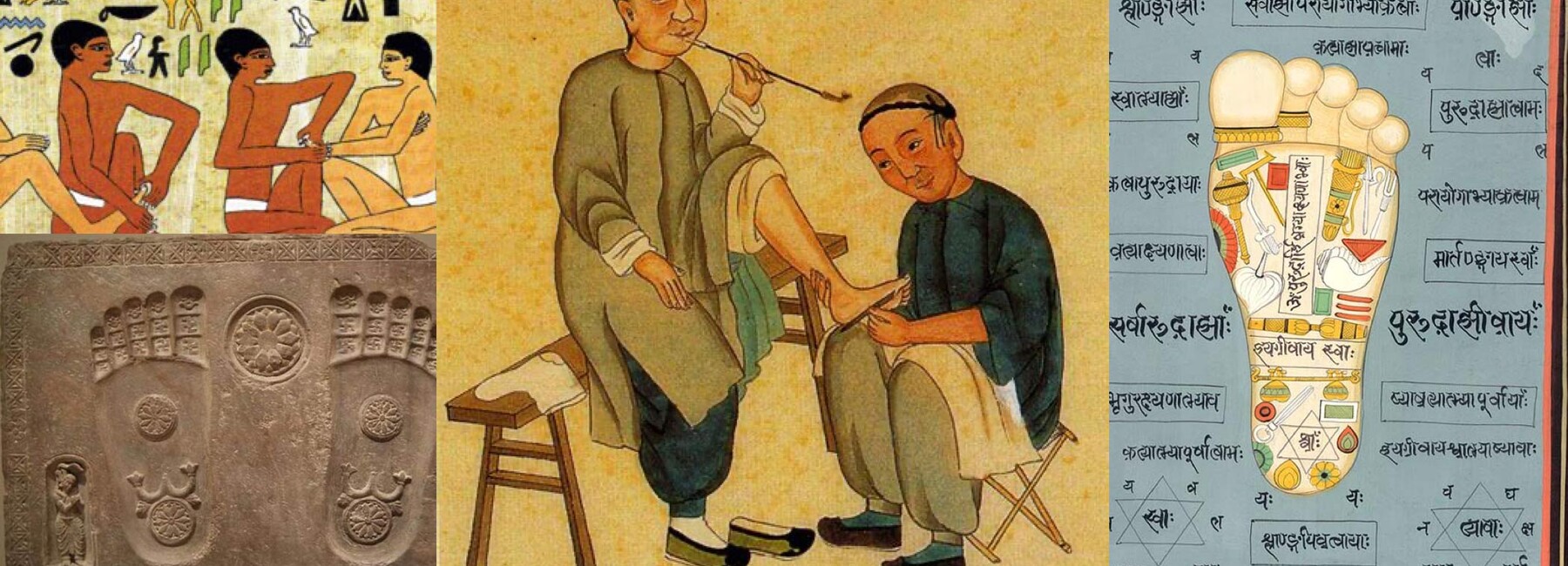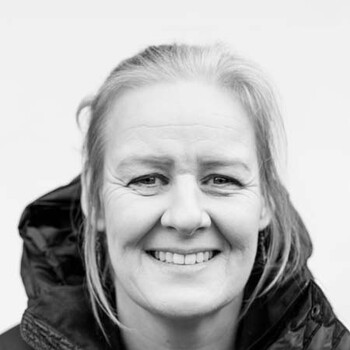A Brief History of Reflexology
Reflexology is an ancient therapeutic practice, with roots tracing back thousands of years to early civilizations across the globe. Evidence of reflexology-like techniques has been found in cultures such as ancient Egypt, China, and India, demonstrating humanity’s longstanding awareness of the connection between specific points on the feet, hands, and ears and overall health.
In ancient Egypt, foot massages were depicted in tomb artwork dating to around 2330 BCE, suggesting that the Egyptians recognized the therapeutic potential of manipulating certain areas of the feet.
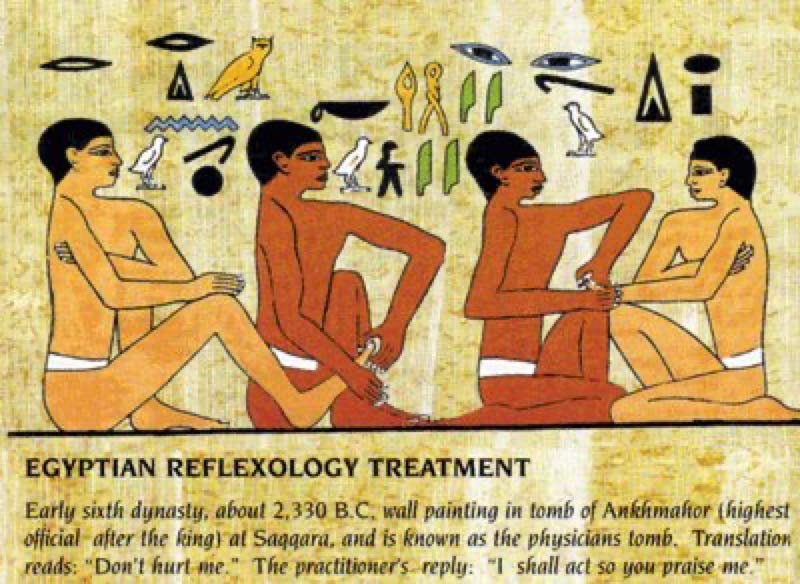
This intriguing depiction was found in the Tomb of Ankhamor
It is also known as the Tomb of the Physician because of the many depictions of medical scenes, and it was discovered at Saqqara, Egypt in the nineteenth century. Ankhamor was known as ‘Vizier, First under the King, Overseer of the Great House’ and was one of the most important officials of the Pharoah, Teti.
It is important for Reflexologists, because although there is plenty of anectdotal evidence for the use of Reflexology in ancient times, this is the earliest pictorial evidence we have.
The inscription reads, “Don’t hurt me.”, and the practitioner replies, “I shall act so you praise me.
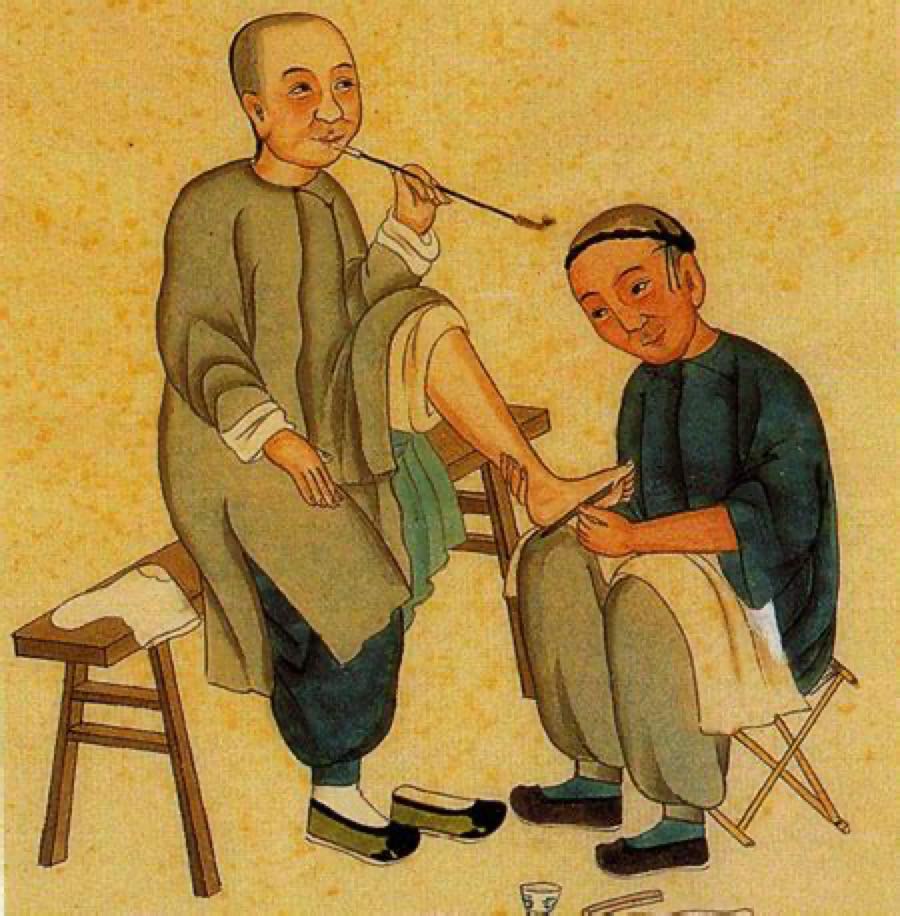
Similarly, in ancient China, texts from around 2700 BCE describe practices resembling reflexology, emphasizing the flow of energy throughout the body and how specific points on the feet could influence health.
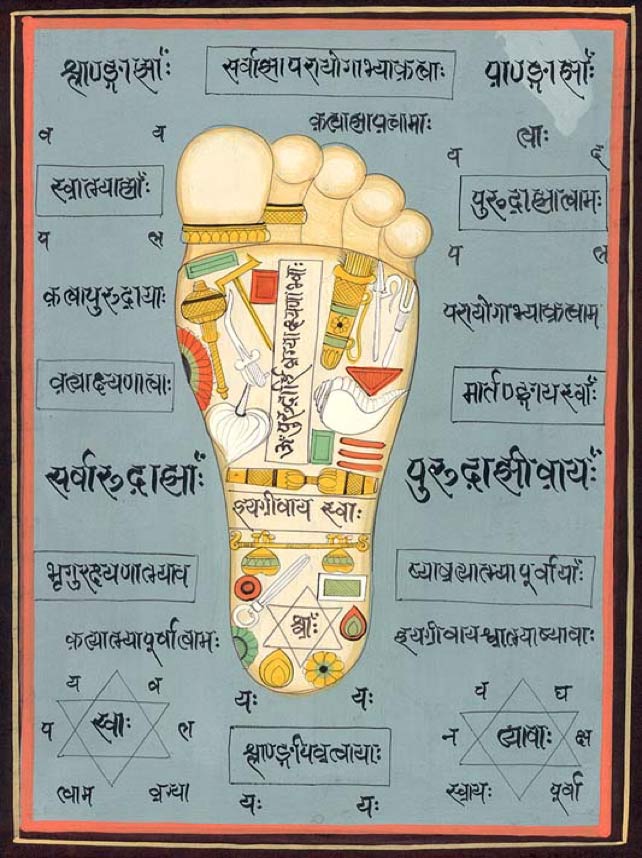
Traditional Ayurvedic foot chart with Sanskrit inscriptions and symbolic illustrations.
India’s Ayurvedic system, which dates back over 5,000 years, also incorporated reflexology-like principles. Ayurvedic practitioners used pressure techniques on the feet and hands as part of a holistic approach to promote physical, mental, and spiritual balance.
The Vishnu Pada are significant objects connected with episodes in his mythology, so that his feet symbolize the unity of the entire universe. Similarly, the Feet of Budda are transformed into an intricate map of his teachings, which are set symbolically in a many-layered universe. They often bear distinguishing marks, such as a Darhma Chakra at the centre of the sole.(Which modern reflexologists would associate with the solar plexus) Both of these are congruent with the belief in reflexology that the feet represent the larger whole.
Footprints of the Buddha abound throughout Asia, dating from various periods. Japanese author Motoji Niwa, who spent years tracking down the footprints in many Asian countries, estimates that he found more than 3,000 such footprints, among them about 300 in Japan and more than 1,000 in Sri Lanka.
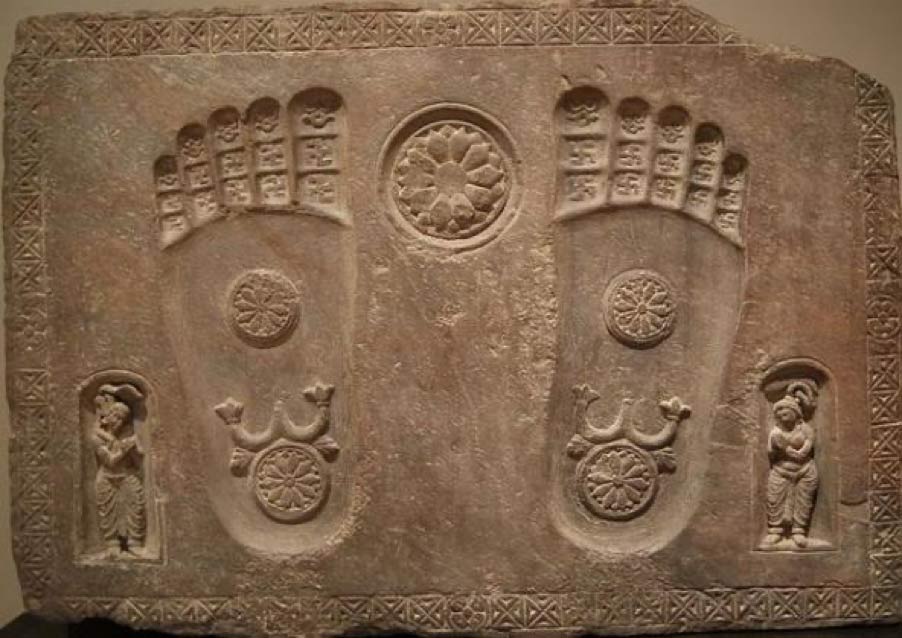
Feet of Budda
Buddhism and Hinduism were the religions of India. Buddhism reached China from India during the Han Dynasty (206BC – 220AD). Silk Road traders probably introduced it to China about 100AD. It is not unreasonable to speculate that reflexology followed this migration of Buddhism with the Buddhist monks.
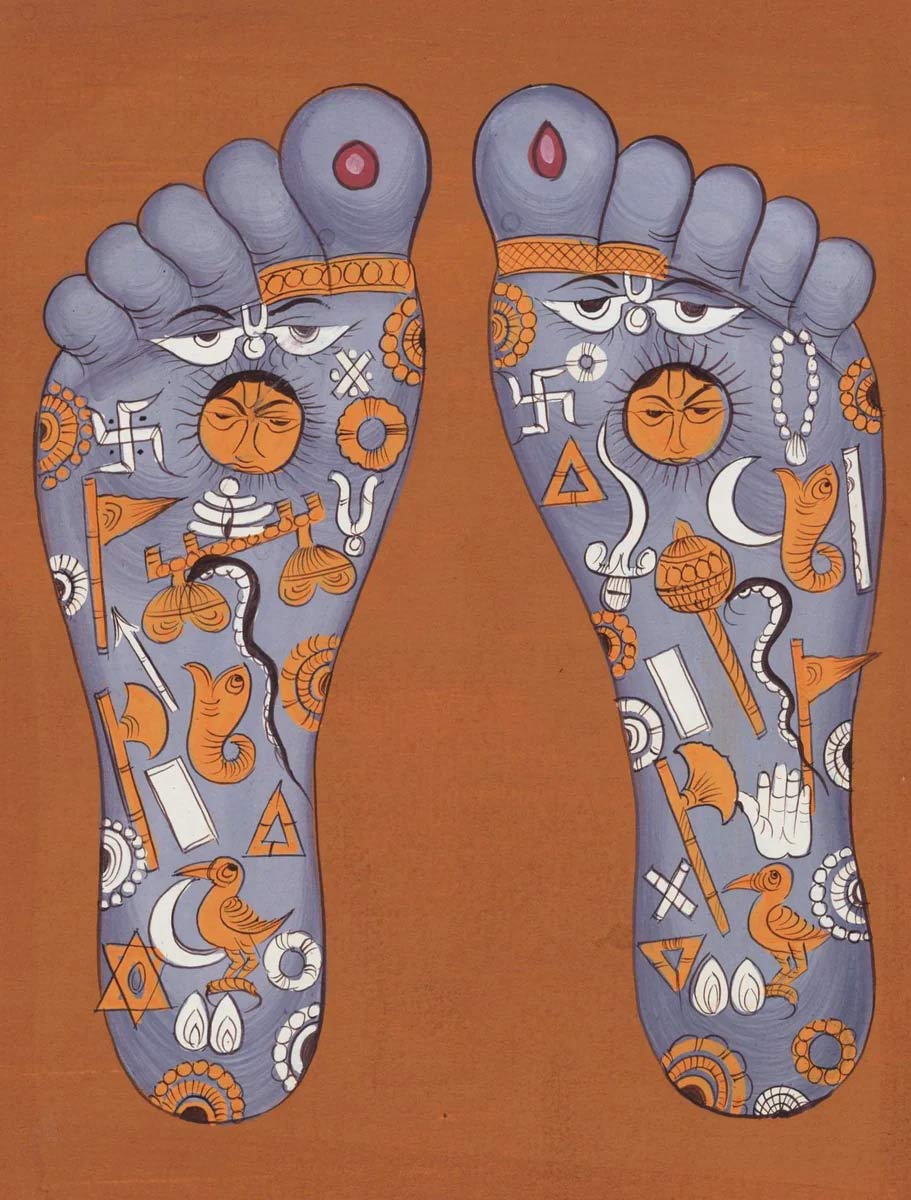
Vishnu Pada Footprints
Modern reflexology
Modern reflexology began to take shape in the early 20th century, thanks to Dr. William Fitzgerald, an American physician. He introduced the concept of "zone therapy," which divided the body into ten vertical zones. Fitzgerald’s theory suggested that pressure applied to reflex points on the feet could influence corresponding areas of the body, setting the stage for the modern practice of reflexology.
In the 1930s, Eunice Ingham, a nurse and physiotherapist, further refined these techniques and is often referred to as the "mother of reflexology." She developed detailed maps of reflex areas on the feet and hands, laying the groundwork for the methods used by practitioners today. Ingham’s work helped popularize reflexology as a therapeutic practice, and her system of treatment continues to serve as the foundation for reflexology worldwide.
Since then, reflexology has evolved and expanded, gaining recognition as an effective form of complementary therapy. It is widely practiced today as a means to promote relaxation, alleviate stress, and support overall health and well-being.
Now respected globally, reflexology is considered a valuable alternative therapy for addressing a variety of health concerns, including tension, poor circulation, and emotional stress. Its rich history and ongoing development highlight the lasting significance of this practice, as it continues to benefit people around the world.
